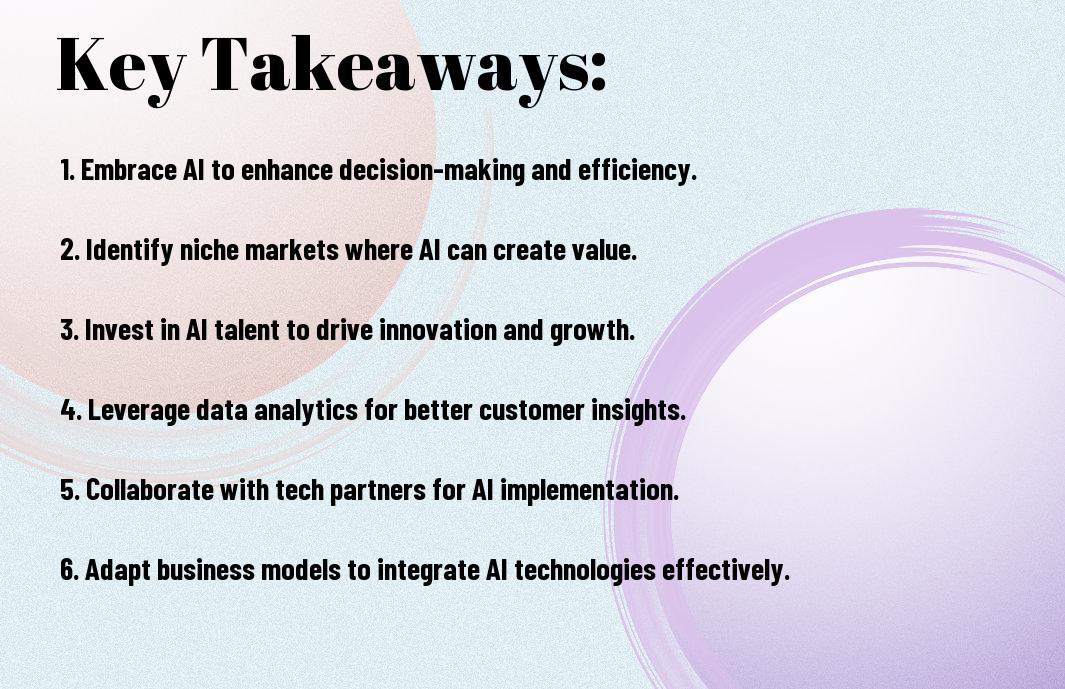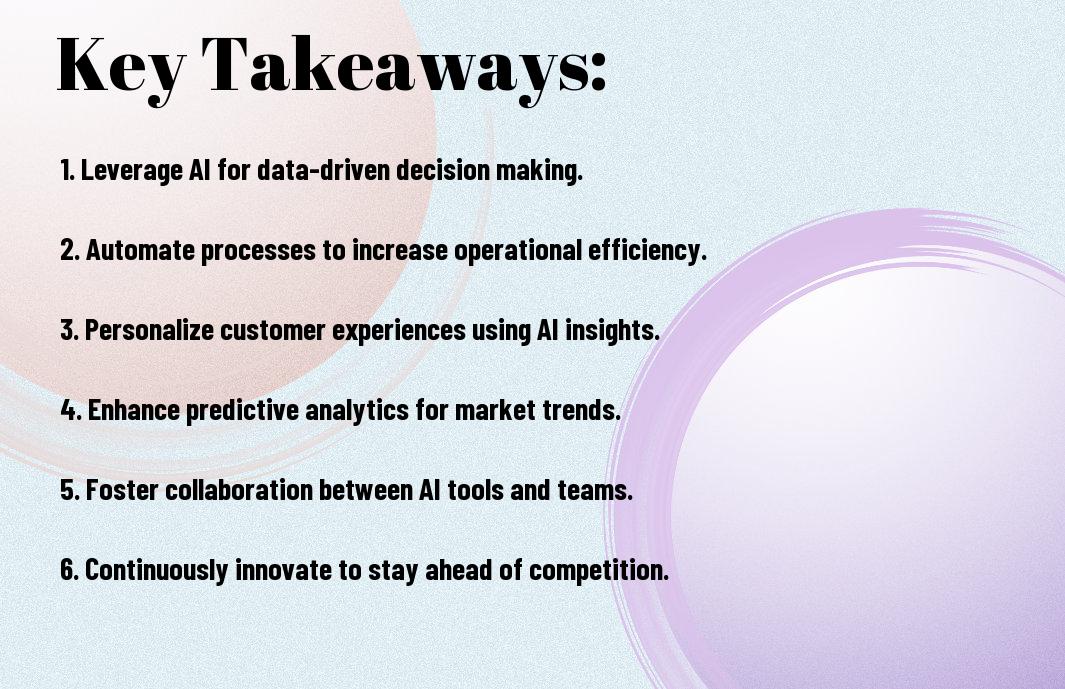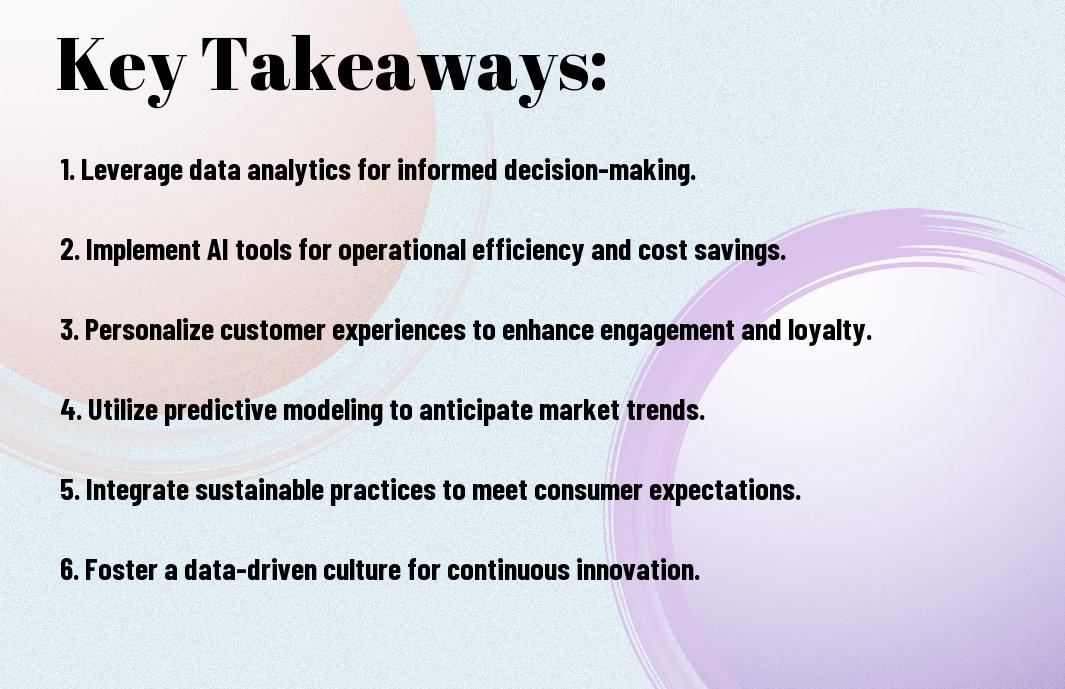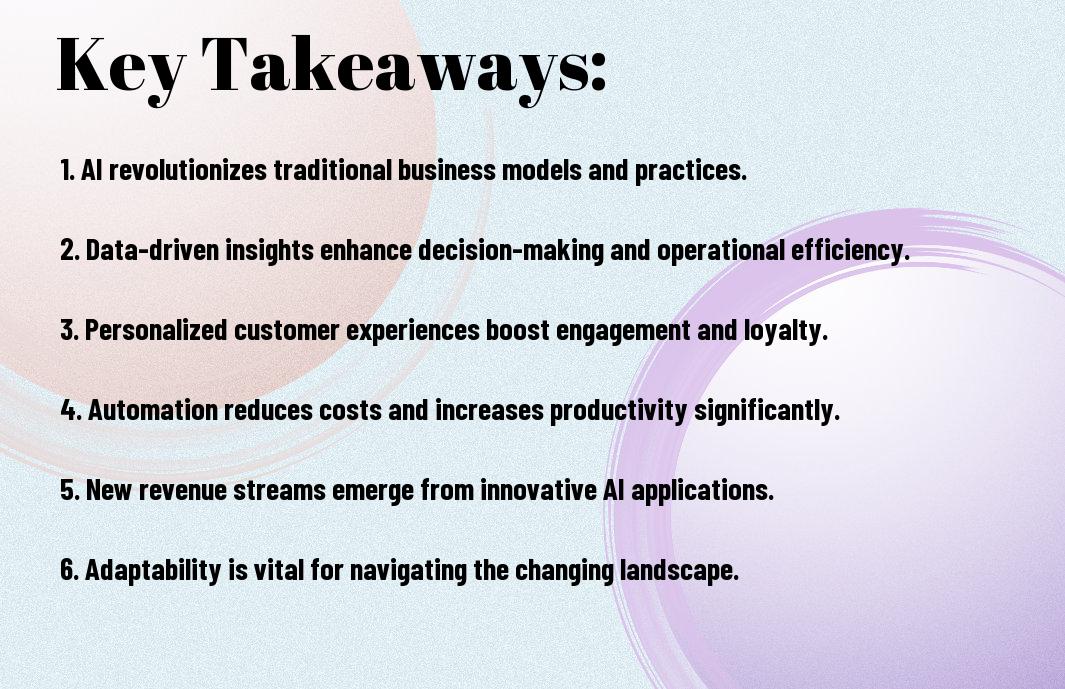As you launch on your entrepreneurial journey, you’re likely aware of the significant impact artificial intelligence (AI) is having on businesses. You’re probably wondering how to harness its power to drive your financial growth. Your ability to adapt and leverage AI will be key to staying ahead of the competition. You’ll need to understand how to integrate AI into your strategy, and this post will provide you with the insights and guidance you need to navigate this revolution and achieve success.
Key Takeaways:
- Embracing artificial intelligence (AI) is vital for businesses to stay competitive and achieve financial growth, as it can automate processes, enhance decision-making, and drive innovation.
- Entrepreneurs should focus on developing strategies that leverage AI to improve customer experiences, optimize operations, and create new revenue streams, thereby driving business expansion and profitability.
- Staying adaptable and continuously updating skills and knowledge is vital for entrepreneurs to navigate the AI revolution successfully, as the technology is constantly evolving and presenting new opportunities and challenges for businesses.
The AI Landscape
For entrepreneurs, understanding the AI landscape is necessary for making informed decisions about your business’s future. You need to stay ahead of the curve to leverage AI’s potential for financial growth.
Current State of AI in Finance
Besides the hype, AI is already transforming the finance sector, and you are likely to see its impact on your business. You can expect increased efficiency and accuracy in financial operations, enabling you to make better decisions.
Emerging Technologies Reshaping Business
Behind the scenes, emerging technologies like machine learning and natural language processing are driving innovation, and you can harness their power to drive your business forward. You will see new opportunities for growth and improved customer experiences.
Hence, as you explore emerging technologies, you will discover that they can help you automate tasks, gain insights from data, and develop new products and services. You can use these technologies to create new revenue streams, improve customer engagement, and stay competitive in a rapidly changing market, ultimately driving your financial growth and success.

Entrepreneurial Opportunities
The AI revolution presents numerous opportunities for entrepreneurs to innovate and grow their businesses. You can leverage AI to develop new products, services, and business models that cater to evolving customer needs, thereby driving your financial growth.
Market Gaps and Pain Points
Alike many emerging technologies, AI also has areas that require improvement, and you can identify these gaps to create innovative solutions that address specific pain points, ultimately giving you a competitive edge in the market.
First-Mover Advantage Strategies
With the AI landscape constantly evolving, you can capitalize on the first-mover advantage by adopting AI technologies early and developing strategies that set you apart from competitors, allowing you to establish a strong market presence.
For instance, you can focus on developing AI-powered solutions that enhance customer experience, improve operational efficiency, or provide data-driven insights, which can help you gain a significant competitive advantage and drive long-term financial growth, as you navigate the AI revolution and make informed decisions about your business strategy.
Risk Assessment Framework
To effectively navigate the AI revolution, you need a comprehensive risk assessment framework that considers various factors affecting your business. This framework will help you identify potential risks and opportunities, enabling you to make informed decisions for financial growth.
Technological Adoption Risks
Above all, you should assess the risks associated with adopting new AI technologies, including integration challenges, data security, and potential disruptions to your existing operations. You must carefully evaluate these risks to ensure a smooth transition and minimize potential losses.
Competitive Displacement Considerations
Before investing in AI, you should consider the potential risks of competitive displacement, where AI-powered solutions may replace traditional business models or services. You need to evaluate how AI might impact your industry and business, and develop strategies to stay ahead of the competition.
Due to the rapid evolution of AI, you must continuously monitor the market and assess the potential for competitive displacement. This involves analyzing your competitors’ AI adoption strategies, identifying areas where AI can enhance your business, and developing a plan to integrate AI into your operations to stay competitive and drive financial growth.
Capital Allocation Strategies
Not all investments are created equal, and you must prioritize your capital allocation to maximize your financial growth in the AI revolution. You need to make informed decisions about where to allocate your resources to stay ahead of the curve.
Investment Priorities for AI Integration
Capitalizing on the latest AI trends, you should focus on integrating AI solutions that drive business value and improve operational efficiency, allowing you to stay competitive in a rapidly changing market, and you will see your business thrive.
Funding Sources for AI Ventures
Venturing into the world of AI requires significant investment, and you have various funding sources to consider, including venture capital, angel investors, and crowdfunding, to support your AI-driven business initiatives, and you should explore these options to determine the best fit for your needs.
With the right funding in place, you can accelerate your AI adoption and drive innovation, you will be able to develop and implement AI solutions that drive real business value, and you should consider factors such as scalability, reliability, and return on investment when evaluating funding sources for your AI ventures, and you will be well on your way to achieving financial growth and success in the AI revolution.
Human-AI Collaboration Models
Now that you’re exploring the AI revolution, you’ll discover various collaboration models that can enhance your business. These models enable you to leverage AI’s capabilities while utilizing your workforce’s strengths, leading to increased efficiency and productivity.
Workforce Transition Approaches
Beneath the surface of AI integration lies the need for strategic workforce transition. You’ll need to assess your employees’ skills and adapt your workforce to work effectively with AI systems, ensuring a seamless transition and minimal disruption to your operations.
Skill Development Imperatives
Above all, developing the right skills is vital for your workforce to collaborate with AI. You’ll need to focus on upskilling and reskilling your employees to work effectively with AI technologies, enabling them to drive business growth and stay competitive.
But as you examine deeper into skill development, you’ll find that it’s not just about technical skills. You’ll also need to focus on developing soft skills, such as critical thinking, creativity, and problem-solving, which will enable your workforce to complement AI systems and drive business innovation, ultimately leading to your financial growth and success.

Regulatory Navigation
All entrepreneurs must navigate the complex regulatory landscape to ensure their AI-driven businesses thrive. You need to stay informed about the latest developments and adapt your strategies accordingly to achieve financial growth.
Compliance Challenges
Above all, you must address the compliance challenges that come with AI adoption, ensuring your business meets the necessary standards and regulations to avoid potential risks and penalties.
Policy Engagement Tactics
Between the lines of regulatory requirements, you can find opportunities to engage with policymakers and shape the future of AI regulation, ultimately benefiting your business and the industry as a whole.
This approach to policy engagement requires you to be proactive, building relationships with key stakeholders and contributing to the development of regulations that support innovation and growth, allowing you to stay ahead of the curve and make informed decisions about your AI investments.
Conclusion
From above, you now have a deeper understanding of the AI revolution’s impact on your financial growth. You can leverage AI to drive your business forward, making informed decisions to stay ahead of the competition. By embracing AI, you will unlock new opportunities, enhancing your entrepreneurial journey and securing your place in the market, ensuring your business thrives in this new era of technological advancement, and ultimately, boosting your financial success.
FAQ
Q: What is the AI Revolution and how does it impact businesses?
A: The AI Revolution refers to the rapid development and integration of artificial intelligence technologies into various industries, transforming the way companies operate, make decisions, and interact with customers. As AI continues to advance, businesses must adapt to stay competitive, leveraging AI-driven insights to drive financial growth, improve efficiency, and innovate their products and services.
Q: How can entrepreneurs prepare their businesses for the AI Revolution?
A: To prepare for the AI Revolution, entrepreneurs should focus on developing a strategic understanding of AI technologies, such as machine learning, natural language processing, and computer vision. They should also invest in employee training, ensuring their workforce has the necessary skills to work effectively with AI systems. Additionally, entrepreneurs should prioritize data quality and management, as high-quality data is vital for AI-driven decision-making.
Q: What are the key benefits of adopting AI in business operations?
A: The key benefits of adopting AI in business operations include increased efficiency, enhanced customer experience, and improved decision-making. AI can automate routine tasks, freeing up human resources for more strategic and creative work. AI-driven analytics can also provide valuable insights into customer behavior, enabling businesses to personalize their marketing efforts and improve customer engagement. Furthermore, AI can help businesses identify new opportunities for growth and innovation, driving financial growth and competitiveness.
Q: How can entrepreneurs measure the success of their AI initiatives?
A: To measure the success of their AI initiatives, entrepreneurs should establish clear goals and key performance indicators (KPIs) that align with their business objectives. They should track metrics such as return on investment (ROI), customer acquisition costs, and customer lifetime value, as well as monitor AI system performance and data quality. Regular assessment and evaluation of AI initiatives will enable entrepreneurs to refine their strategies, address potential issues, and optimize their AI investments for maximum impact.
Q: What are the potential risks and challenges associated with adopting AI, and how can entrepreneurs mitigate them?
A: The potential risks and challenges associated with adopting AI include data privacy and security concerns, job displacement, and bias in AI decision-making. To mitigate these risks, entrepreneurs should prioritize transparency and accountability in their AI systems, ensuring that they are fair, explainable, and aligned with human values. They should also invest in robust data governance and security measures, protecting sensitive customer information and preventing potential data breaches. By being aware of these potential risks and taking proactive steps to address them, entrepreneurs can minimize the challenges associated with AI adoption and maximize its benefits for their businesses.











